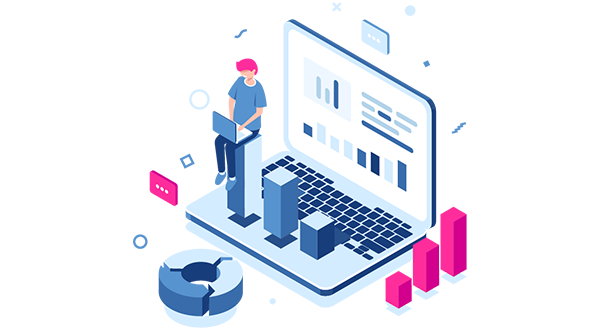

mLogica Thought Leaders: Preparing a Successful Legacy or Mainframe Database & Application Migration

Sulagna Kanungo, mLogica Director of Sales, North America
A potentially game-changing strategic business decision, legacy distributed or mainframe database and application migration to a modern platform is crucial to streamlining business operations, increasing efficiency and opening paths to innovation, agility and new technologies. However, the actual transition can present significant challenges.
For private and public sector organizations planning a database migration, setting clear objectives and developing an end-to-end plan, one that identifies potential issues, as well the range of possible solutions, is essential to creating a realistic journey roadmap. Such a plan should start with a comprehensive assessment of your existing database and applications infrastructure, including major and minor technologies and all their interdependencies. This critical assessment phase allows the migration team to gain a full picture of all existing database elements, including schemas, data objects such as tables, indexes, functions and stored procedures, as well as constraints and triggers.
Key Elements to Assess in Your Existing Database and Applications Infrastructure
Comprehensive application and database assessments: This allows you to gain deep insights into your existing application and database landscape, ensuring a smoother, more predictable migration process. It’s critical to analyze the source code to uncover hidden complexities, dependencies and potential issues within both the applications and the associated databases. This is crucial for understanding how each application interacts with the databases and identifying any tight coupling or outdated dependencies that could hinder migration efforts.
Additionally, it’s vital to assess the application structure, pinpointing areas of technical debt and architectural weaknesses that may need to be addressed prior to migration. By generating detailed reports on code quality, data flows and interdependencies, organizations can plan remediation efforts, refactoring or even rearchitecting of certain components to better align with the target environment.
Database schema alignment: Evaluating the underlying structure of your source database is vital to identify any compatibility gaps between the source and target database schemas. Addressing these gaps early can prevent data integrity issues and reduce the risk of migration failure.
Data volume and structure: Data accuracy is paramount during migration. Analyzing data size, structure and complexities helps pinpoint issues such as outdated information, inconsistencies and duplications.
Target system compatibility analysis: A thorough assessment of both the source and target database environments is crucial to uncover architectural discrepancies. This is particularly important when migrating databases to the cloud. Such an assessment should include analysis of data types, potential functionality differences and storage formats.
Capacity planning: Benchmarking target database platform capacity is essential to evaluate its ability to handle current and future workloads, taking into consideration all data types and volumes.
Data security: Protecting confidential business and client data is vital for any private or public sector organization. Therefore it’s critical to perform a data security assessment of the target system, focusing on its underlying architecture, functionalities and features to ensure they meet current security requirements and can easily be adapted and upgraded to meet evolving issues and cyber threats.
Data mapping: Incompatibility between source and target data elements can lead to inconsistencies. By meticulously analyzing architectural differences and mapping elements across both systems, you can determine if any modifications will be necessary to ensure compatibility and data quality on the target platform.
Data transformation methodology: Identifying the optimal data transformation methods during the assessment phase helps avoid migration and compatibility roadblocks. This includes outlining methods for data cleaning, format conversion and any business logic-related modifications.
Planning and Strategy for Migration
Since there are a range of target database options that vary according to operational scale, cost management and security features, selecting the appropriate model for your organization’s current and future needs is critical. A thorough assessment of your current environment and the organization's unique requirements is crucial to identify the platform that will deliver optimal operational benefits while keeping costs in check.
LIBER*M Mainframe Modernization Suite, mLogica’s automated, GenAI-powered migration solution, is designed to streamline these assessment and migration processes. LIBER*DAHLIA, the assessment module of LIBER*M, identifies all technologies within the existing system, including supporting and exotic tools, languages and more that are often overlooked in the run-up to migrations. By identifying and addressing potential challenges and interdependencies right at the outset, private and public sector organizations can avoid frustrating technical roadblocks that can delay or even derail modernization initiatives, an all-too-common hazard we call The Last Mile Challenge.
Additional key considerations in building a fail-safe migration strategy include:
Operational scale: A target model should have the capacity to handle your organization’s current data volume, query complexity and performance needs, as well as projected future requirements.
Security and compliance features: Make sure the target database meets your business and data security requirements, including access control procedures, data encryption and facilitation of compliance and reporting processes.
Choosing the Right Migration Approach
At mLogica, we know that for a successful transition, the migration strategy should be tailored to your organization’s current situation and future goals. Selecting an approach that aligns with your data demands, downtime tolerance and budget is vital. Our goal is to minimize disruption while accelerating your transition to the cloud so your organization can continue to operate smoothly during transition and afterward.
Downtime tolerance assessment: Since prolonged downtime during migration can significantly disrupt operations, assessing your IT environment's offline tolerance, including business applications and supporting systems, helps determine the best migration method. Automated migration solutions, such as mLogica’s GenAI-powered STAR*M Distributed Workload Modernization and LIBER*M Mainframe Modernization Suite, which virtually eliminate project-delaying human error, minimize downtime and its associated risks.
Testing and validation: A comprehensive testing protocol, one that validates database functionalities and data integrity, is the cornerstone of a successful database migration. Your migration team should prepare a diverse set of test cases, covering the complete range of business scenarios, to comprehensively evaluate the migrated system for accuracy and performance prior to go-live.
Risk assessment and mitigation: Risk assessment is fundamental for any migration of mission-critical systems such as databases and business applications. Analyzing potential risks such as incompatibilities, downtime events and data security breaches allows you to proactively address potential threats. A robust mitigation strategy should include contingency plans, rollback options and data backup methods.
Resource planning and cost analysis: Benchmark your existing database system's resource consumption to estimate the resources that will be required to run workloads on the target platform. You will also need to factor in project costs, including hardware and software support, staff required to ensure uninterrupted operation of the migrated database components and any specialists needed to address underlying or exotic technologies.
Strategic Preparation Drives Migration Success
The decision to migrate to a new database should be based on specific use cases and an analysis of both current performance metrics and projected future requirements. It’s best to begin by gaining a holistic view of all critical components supporting your existing database environment, including their suitability for migration and all interdependencies. Then, establish performance baselines for all the components you plan to migrate.
Identify specific use cases and analyze performance metrics, including query speed, latency, resource utilization, as well as budgetary metrics such as storage, licensing and data ingestion costs across both source and target environments. For instance, if you plan to migrate data for analytics and business intelligence, testing use cases will allow you to determine the suitability of the target environment for large data volumes and complex queries.
Comprehensive assessment also allows you to determine the migration-readiness of all your data and identify the most appropriate encryption method to safeguard it from potential security threats, both in flight and in its new environment. By following these steps, you can optimize your database and application migration, mitigate risk, ensure a seamless transition to a modern, agile system and accelerate time to value.








































